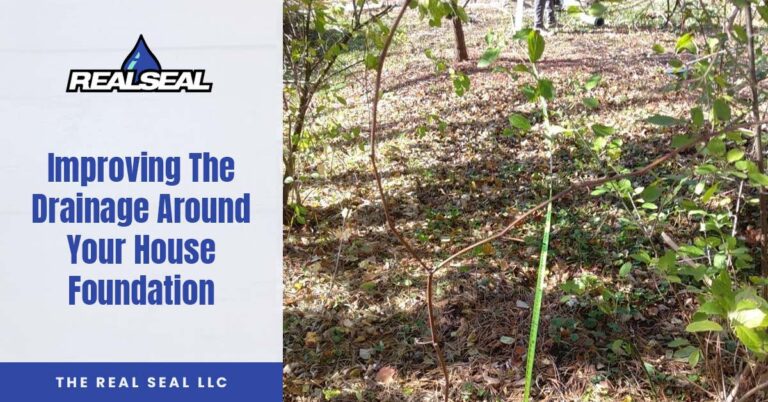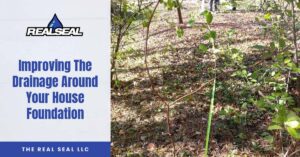If you want to know why improving the drainage around your house foundation can save you thousands of dollars, this is the article for you. Most homeowners aren’t aware of how poor drainage can affect their foundation, leading to water seepage and structural damage. After this blog, you’ll have everything you need before you call the experts.
Why Do You Need Drainage Around Your House Foundation?
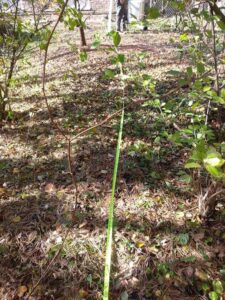
If excess groundwater builds up around your house foundation, it can start to push your basement walls inward, crack your concrete, and allow water to enter your home. This process, known as hydrostatic pressure, usually occurs in high water table areas that experience heavy rain and snow. As the water builds up in your soil, so does pressure, which pushes against your basement walls. This pressure can also push upward underneath your basement floor or slab foundation, causing cracks and cove joint seepage (water is seeping through the space between your basement walls and floor).
Most foundation waterproofing companies offer many different solutions that catch and collect water that seeps through your walls or floors. These companies also offer foundation repair solutions that fix any structural damage caused by hydrostatic pressure, such as bowing walls. You can find many of these solutions in these two blogs: 7 Basement Waterproofing Solutions That Work and Foundation Repair Methods For Settlement, Cracks, & More.
In the rest of the article, we will discuss things you can do to your property outside your foundation.
Solution 1: Grading Your Soil
Solution 2: Cleaning And Extending Your Gutters
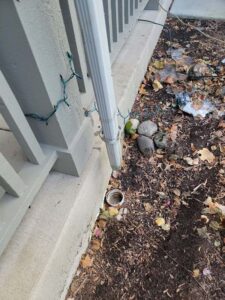
If your gutters are clogged with leaves, branches, or debris, water will pour over the sides and land directly at the base of your home. Without gutters, water will pour directly near your foundation. Clogged gutters are counterintuitive. Professionals also recommend extending your gutter downspouts, so they are not dumping water too close to your home. Smart foundation waterproofing experts will extend your gutters away from your home using pipes buried right below your grass for at least 20 feet. This carries water away from your home, keeps them from being run over by lawnmowers or cars, and hides them from sight.
Solution 3: Exterior Drain Tile System
Interior and exterior drain tile systems both collect water gathering under and around your foundation. The only major differences between the two are that exterior drain tiles require full excavation of your foundation and include a wall seal. An interior system will utilize a wall covering to catch any water coming through the foundation as well.
Both systems collect water from underneath the foundation, where hydrostatic pressure is greatest.
Exterior drain tile systems also allow homeowners to waterproof their foundation without touching the inside of their basement or crawl space. This can help you avoid needing someone to replace any removed drywall or paneling. Note: A sump pump and pit will still need to be installed inside your foundation.
Solution 4: French Drains
A French drain is a perforated pipe placed right below your grass in a gravel-filled trench. If your property is prone to pooling, a French drain will collect sitting water and channel it further away from your home. In order to keep your French drain from clogging with leaves or dirt, experts wrap the pipe with a non-woven fabric sock.
Experts always make sure the pipe leads at a downward slope away from your home for at least 20 feet until it ends at a bubbler pot, drainage ditch, or dry well (a plastic or concrete box filled with gravel placed under your grass). You can also learn more about how a French drain works.
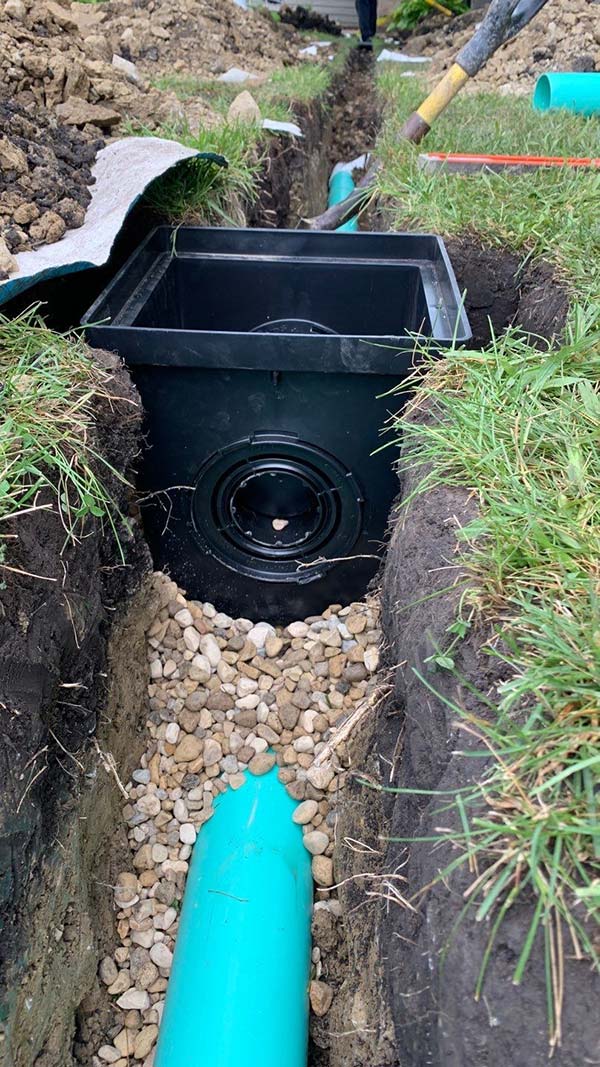
Who Can Help With The Drainage Around Your House Foundation?
The average amount of rainy days in Chicagoland is about 119 out of 365. If you’re a homeowner in the area, chances are your property’s soil absorbs a lot of water. If you want a reliable and professional foundation waterproofing company, call The Real Seal. We’ve been improving the drainage around house foundations for thousands of homeowners since 2011. Reach out to us today and receive your free inspection and estimate.
